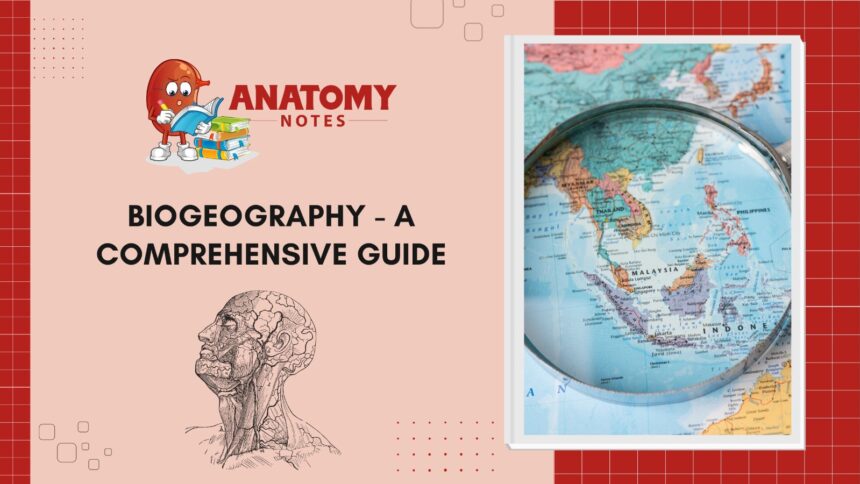Welcome to the fascinating world of biogeography, where science meets adventure in exploring the distribution of life on Earth. From glowing deep-sea creatures to the intricate dance of continents shaping habitats, biogeography offers a captivating journey into understanding how and why species are where they are. Join us as we delve into the history, concepts, and future directions of this dynamic field that unravels the mysteries of our planet’s biodiversity.
Bioluminescence
Imagine a world where the dark depths of the ocean come alive with shimmering lights, courtesy of bioluminescent organisms. These remarkable creatures have evolved to produce their own light through chemical reactions, creating mesmerizing displays that illuminate the night. From glowing jellyfish to sparkling fireflies, bioluminescence serves various functions such as attracting mates, luring prey, or even deterring predators.
The ability to generate light gives these organisms a unique advantage in the often pitch-black environments they inhabit. Deep-sea dwellers like anglerfish use their bioluminescent lures to attract unsuspecting prey within striking distance, showcasing nature’s ingenious adaptations for survival in extreme conditions. Bioluminescence not only adds a touch of magic to our planet but also offers valuable insights into how life has adapted and thrived in diverse ecosystems over millions of years.
Historical Development of Biogeography
The field of biogeography has a rich historical development that dates back to the ancient Greeks and Romans, who laid the groundwork for understanding the distribution of plants and animals on Earth. Over time, explorers like Alfred Russel Wallace and Charles Darwin contributed significantly to shaping biogeography as we know it today.
In the 19th century, advancements in geography and evolutionary biology led to a more systematic study of species distribution patterns across different regions. This period marked a shift towards using scientific methods to explain the diversity of life on our planet.
As technology advanced, so did our ability to map out ecosystems and track the movements of species over time. Today, with tools like remote sensing and genetic analysis, biogeographers can delve deeper into understanding how environmental factors shape biodiversity across landscapes.
By building upon centuries of research and exploration, modern biogeographers continue to uncover new insights into how organisms adapt and evolve in response to changing conditions. The historical development of biogeography serves as a testament to humanity’s enduring curiosity about the natural world around us.
Fundamental Concepts in Biogeography
Biogeography, a fascinating field of study that delves into the distribution of living organisms on Earth. Fundamental concepts in biogeography provide a framework for understanding how and why species are where they are. One key concept is the idea that environmental factors shape species distributions – from temperature and precipitation to soil type and topography.
Another important concept is dispersal, which explores how species move across landscapes over time. Evolution plays a crucial role as well, as it determines how species adapt to different environments and evolve new traits.
Biogeographers also consider historical factors like glaciation events and continental drift, which have influenced current patterns of biodiversity around the world. By examining these fundamental concepts, researchers can gain insights into the complex interactions between organisms and their environment on a global scale.
Geographic Distribution of Species
Geographic distribution of species is a fascinating aspect of biogeography that explores how different organisms are spread across the planet. It’s incredible to think about the diversity of life forms and how they adapt to various environments. From the lush rainforests teeming with biodiversity to the harsh deserts where only specialized species survive, nature has its way of balancing ecosystems.
Species distribution is influenced by factors such as climate, habitat availability, competition for resources, and even human activities. The interconnectedness of these elements shapes where plants and animals can thrive and coexist. Studying geographic distribution helps us understand how ecosystems function and evolve over time.
Through mapping out species ranges and observing patterns in their distributions, scientists gain valuable insights into evolutionary processes and ecological interactions. Each region on Earth has its unique set of flora and fauna, contributing to the rich tapestry of life that makes our planet so vibrant.
Exploring the geographic distribution of species opens up a world of discovery about the intricate relationships between organisms and their environments.
The Role of Plate Tectonics in Biogeography
Plate tectonics play a crucial role in shaping the distribution of species on Earth. The movement of Earth’s plates over millions of years has influenced the evolution and dispersal of organisms across different continents and oceans. As continents drift apart or come together, barriers are created or removed for species to migrate, leading to unique patterns of biodiversity.
When landmasses were connected in the past, it allowed for intercontinental exchange of flora and fauna, leading to similarities in species composition between regions that were once connected. Conversely, when landmasses drifted apart, isolated populations evolved independently, resulting in distinct biotas.
Mountain ranges formed by tectonic activity can act as barriers to species dispersal, creating diverse ecosystems with endemic species found only in specific regions. Additionally, volcanic eruptions and earthquakes can disrupt habitats and change environmental conditions, influencing the distribution of species over time.
Plate tectonics have been instrumental in shaping the biogeographical patterns we see today by altering landscapes and influencing evolutionary processes.
Biogeographical Regions and Biomes
Have you ever wondered about the different biogeographical regions and biomes around the world? These areas play a crucial role in shaping the distribution of plant and animal species. From tropical rainforests to polar deserts, each biome has its own unique set of environmental conditions that influence the organisms living there.
Biogeographical regions are large areas of land or water with distinct climate, geology, and biodiversity. They help scientists understand how species have evolved and adapted to their surroundings over time. By studying these regions, researchers can gain insights into the interconnectedness of life on Earth.
Whether it’s the lush forests of Amazonia or the vast savannas of Africa, each biome supports a diverse array of flora and fauna. The characteristics of each biome determine which species can thrive there and how they interact with one another. This intricate web of relationships is essential for maintaining ecosystem balance.
Exploring biogeographical regions and biomes allows us to appreciate the incredible diversity of life on our planet. It reminds us that every corner of Earth plays a vital role in sustaining ecological harmony. Next time you venture into nature, take a moment to marvel at the beauty and complexity that surrounds you.
Island Biogeography and its Principles
Islands have long fascinated biogeographers due to their isolated nature, leading to unique ecosystems and species found nowhere else. Island biogeography is the study of how these factors influence species diversity and distribution on islands.
One key principle is the theory of island biogeography, which suggests that larger islands closer to mainland areas tend to have higher species diversity. This is because larger land masses can support more habitats and resources for a variety of organisms.
Another important concept in island biogeography is the idea of isolation. Islands far from other land masses may have lower species diversity as it’s harder for new species to colonize them.
Additionally, the size of an island plays a crucial role in determining its biodiversity. Larger islands typically have more niches available for different species to inhabit, leading to greater overall diversity compared to smaller islands.
Understanding these principles helps conservationists develop effective strategies for preserving biodiversity on islands facing threats like habitat destruction or invasive species introduction.
Evolutionary Processes in Biogeography
Evolutionary processes play a crucial role in shaping the distribution of species across different regions. Over time, organisms have adapted to their environments through natural selection, leading to unique variations within populations. These adaptations can influence how species migrate and settle in new habitats, ultimately impacting biogeographical patterns.
One key concept is speciation, where new species arise due to isolation or environmental changes. This process can result in the formation of distinct biogeographic regions with specific flora and fauna. Additionally, evolutionary relationships between species can provide insights into their historical dispersal and divergence.
Migration also plays a significant role in biogeography as organisms move between areas, influencing genetic diversity and population dynamics. Environmental factors such as climate change can further drive evolutionary shifts, affecting species distributions over time.
Understanding evolutionary processes is essential for unraveling the complex interactions between organisms and their environments in the field of biogeography.
Ecological Factors Influencing Species Distribution
When it comes to understanding why certain species are found in specific areas, ecological factors play a crucial role. These factors can include temperature, precipitation, soil composition, and even the presence of other species.
For example, some plants may only thrive in acidic soils while others prefer alkaline conditions. Similarly, animals like amphibians may require access to freshwater habitats for breeding purposes.
Climate also plays a significant role in determining species distribution. Cold-blooded animals might be limited to warmer climates while cold-adapted species are more prevalent in cooler regions.
Additionally, competition between different species can influence their distribution patterns. A dominant species may outcompete others for resources, leading to uneven distributions across an ecosystem.
Ecological factors create a complex web that shapes the distribution of life on Earth.
Human Impact on Biogeography
Human activities have significantly altered biogeographic patterns around the world. Deforestation, urbanization, pollution, and climate change have all played a role in reshaping ecosystems and species distributions. As humans continue to expand their footprint on the planet, biodiversity is increasingly threatened.
The introduction of invasive species due to human transport has disrupted native ecosystems, leading to declines in local species populations. Overfishing and hunting practices have also caused imbalances in food chains and ecosystems.
Climate change resulting from human-induced greenhouse gas emissions is causing shifts in species ranges as they adapt to changing temperatures and habitats. This can lead to mismatches between interacting species, impacting their survival.
Conservation efforts are crucial in mitigating the negative impacts of human activities on biogeography. By implementing sustainable practices and protecting critical habitats, we can help preserve biodiversity for future generations.
Conservation Biogeography
Conservation Biogeography is a field that focuses on understanding the distribution of species and ecosystems to develop effective conservation strategies. By studying how different factors influence the distribution of biodiversity, conservation biogeographers can identify areas that are crucial for preservation.
This discipline integrates ecological principles with geographical analysis to prioritize areas for conservation efforts based on their significance in supporting diverse flora and fauna. Conservation biogeography plays a vital role in guiding decision-making processes aimed at protecting endangered species and habitats from further degradation.
Through mapping out hotspots of biodiversity and assessing human impacts on these regions, conservation biogeographers aim to promote sustainable land management practices and mitigate threats to vulnerable ecosystems. By utilizing spatial data and modeling techniques, researchers can predict future trends in biodiversity loss and implement proactive measures to safeguard our planet’s natural heritage.
Future Directions in Biogeographic Research
As we look towards the future of biogeographic research, exciting possibilities lie ahead. In a rapidly changing world, advancements in technology and data analysis are shaping the way we study and understand the distribution of species on Earth.
One key direction is the integration of genomics into biogeography, allowing us to explore how genetic variation influences species distributions. By studying DNA sequences, researchers can uncover evolutionary relationships and track migration patterns with unprecedented detail.
Another promising area is the use of remote sensing tools to map habitats and monitor changes in real-time. From satellite imagery to drones, these technologies provide valuable insights into how ecosystems are responding to environmental shifts.
Collaboration between scientists across disciplines will also play a crucial role in advancing biogeographic research. By bringing together experts in ecology, geology, climatology, and more, we can gain a holistic understanding of how species interact with their environment.
As we continue to push boundaries and delve deeper into the complexities of biogeography, new discoveries await that will revolutionize our understanding of life on Earth. The future holds endless possibilities for unraveling the mysteries of species distribution and ecosystem dynamics.
Conclusion
As we wrap up our exploration of biogeography, it’s clear that this field offers a fascinating lens through which to understand the intricate relationships between living organisms and their environments. From the historical development of biogeography to the role of plate tectonics in shaping species distribution, there is a wealth of knowledge waiting to be uncovered.
Biogeography not only sheds light on how different species are distributed across the globe but also highlights the impact of ecological factors and human activities on these patterns. The principles of island biogeography and evolutionary processes further add depth to our understanding of biodiversity dynamics.
Looking ahead, future research in biogeography holds promise for uncovering new insights into conservation strategies and sustainable management practices. By continuing to explore the complexities of geographic distribution and species interactions, we can work towards a more informed approach to preserving our planet’s rich biological diversity.
Frequently Asked Questions (FAQs)
Q1: What is the importance of biogeography?
Biogeography helps us understand how species are distributed and how they interact with their environment. It also provides insights into evolutionary processes and aids in conservation efforts.
Q2: How does human activity impact biogeography?
Human activities such as deforestation, pollution, and climate change can significantly alter habitats, leading to changes in species distribution and biodiversity loss.
Q3: What are some future directions in biogeographic research?
Future research in biogeography will likely focus on understanding the impacts of global climate change on species distributions, exploring new technologies for data collection and analysis, and developing innovative conservation strategies.
By exploring the fascinating world of biogeography, we gain valuable insights into the interconnectedness of life on Earth. From historical developments to current challenges and future directions, this field continues to shape our understanding of the natural world around us.




